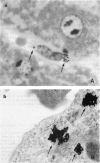Abstract
To clarify the biological activity of complement solubilized immune complexes, we studied their interaction with mouse peritoneal macrophages. The solubilized complexes lost their binding affinity for C3b receptor and Fc receptor but still bound to MPM mainly via the C3bi receptor (CR3). When solubilized immune complexes were injected into mice, they were more rapidly removed from the circulation than antigen excess soluble complexes and taken up by the liver Kupffer cells. Therefore, the solubilized complexes could be catabolized by the reticuloendothelial system, mainly in the liver. Probably, CR3 plays an important role in this process.
Full text
PDF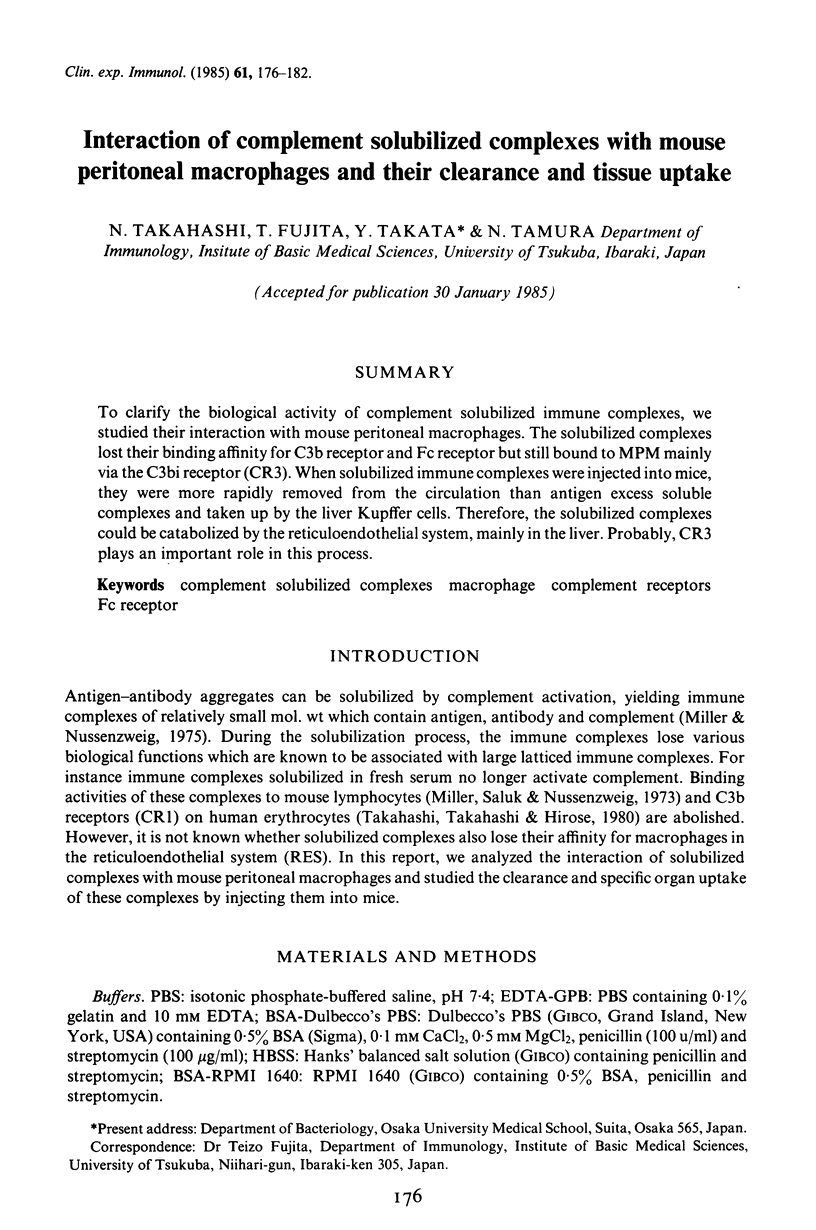
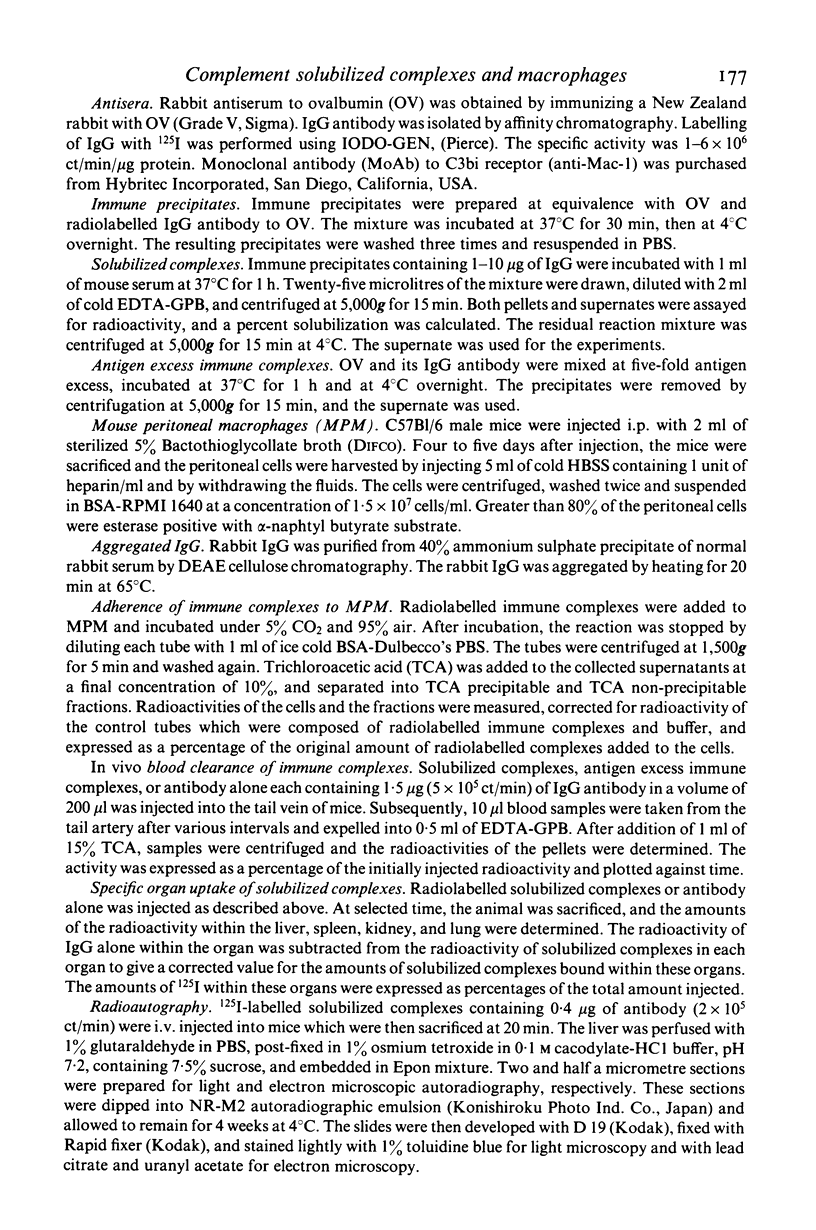
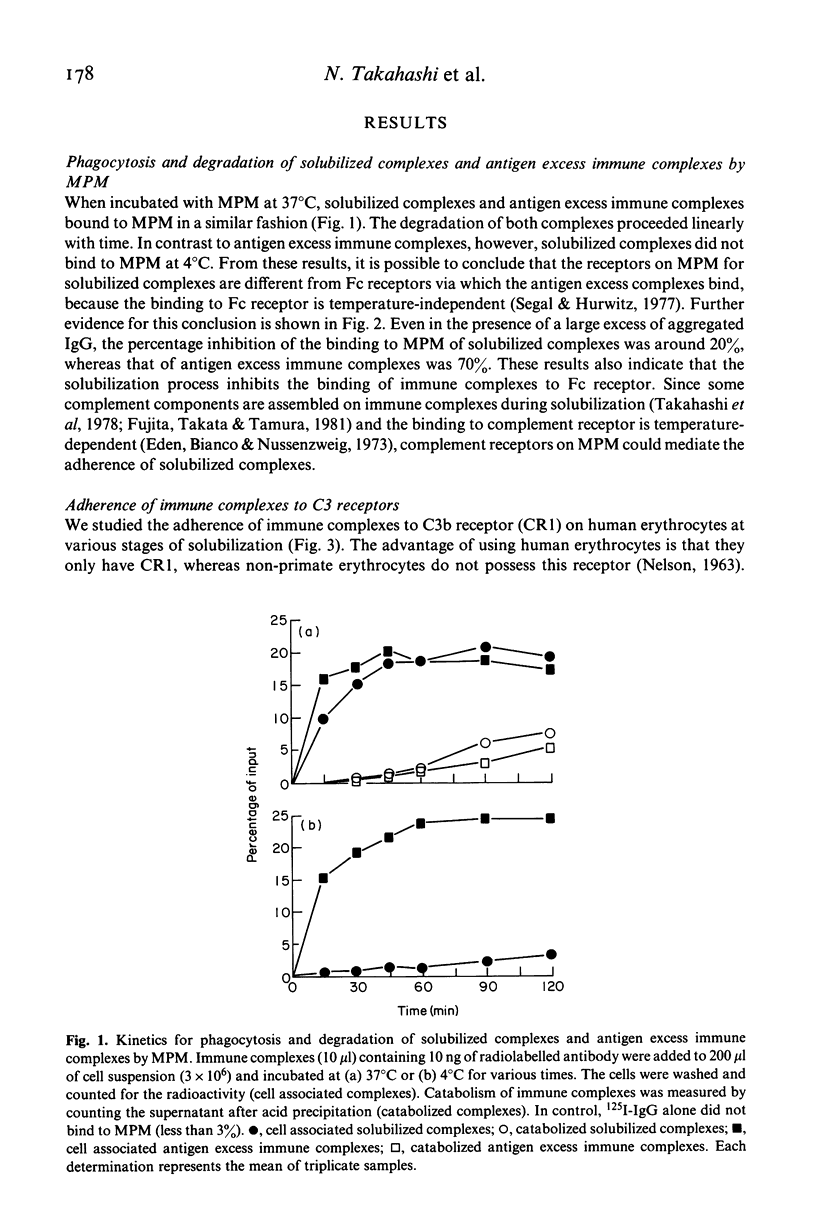
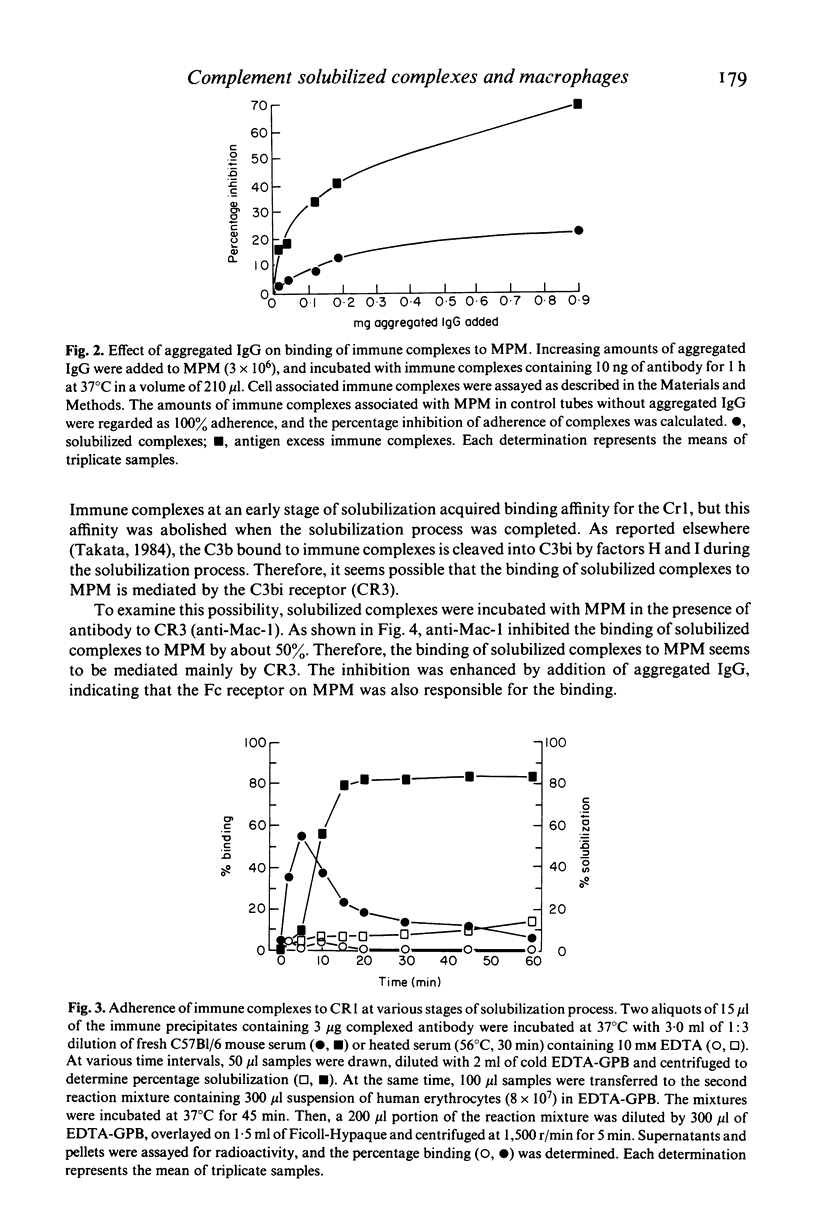
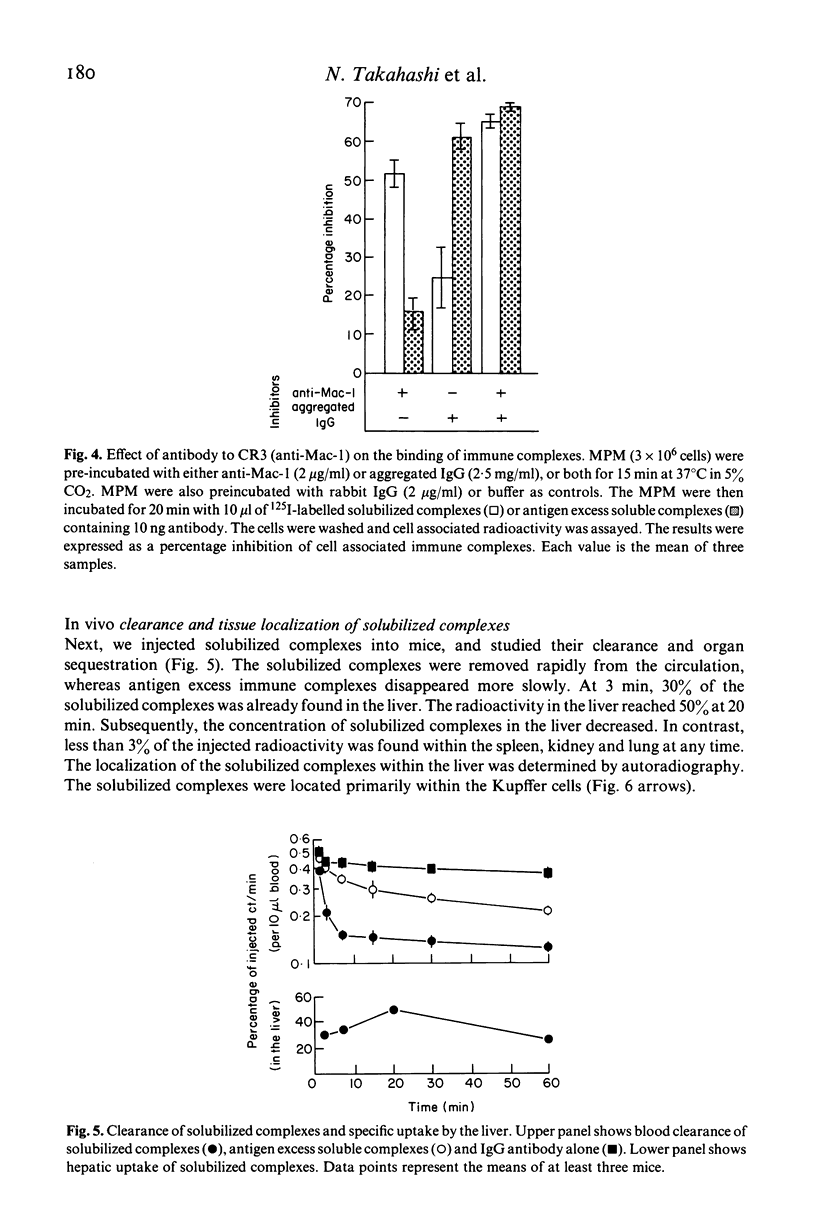
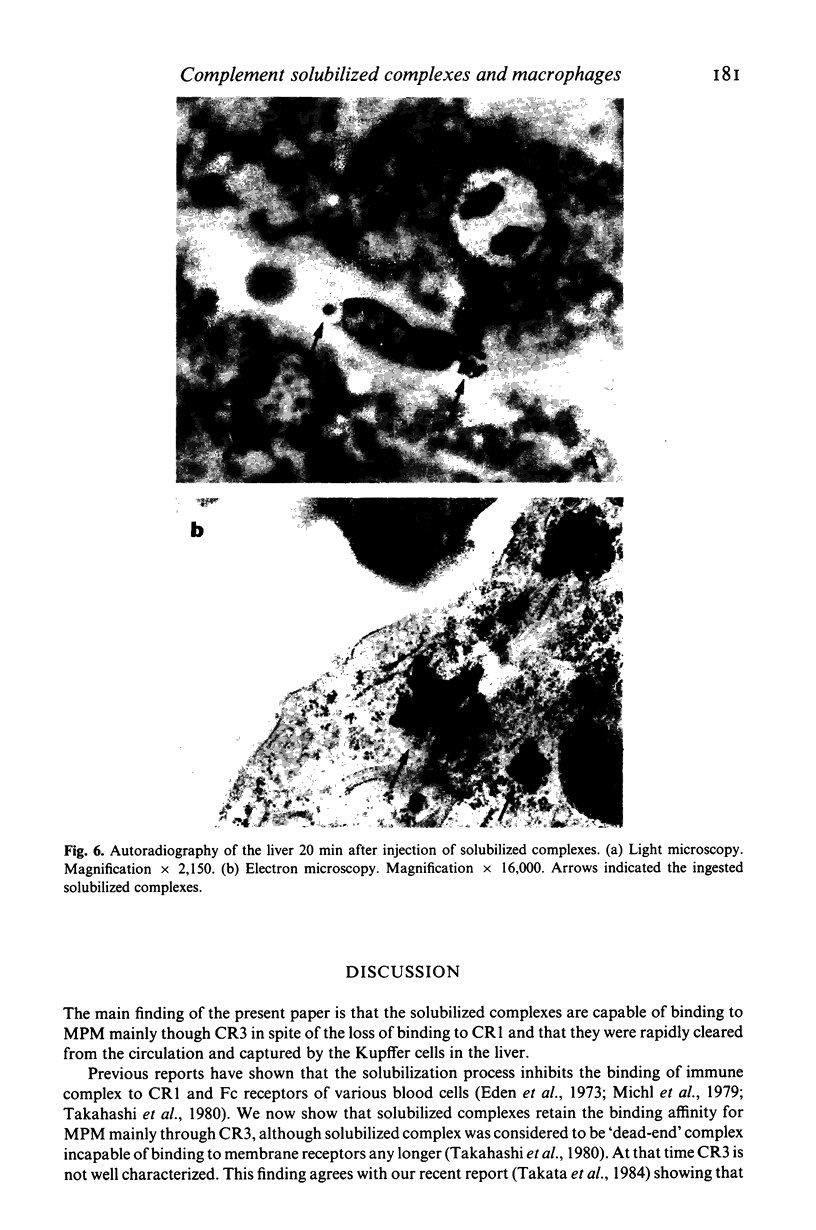
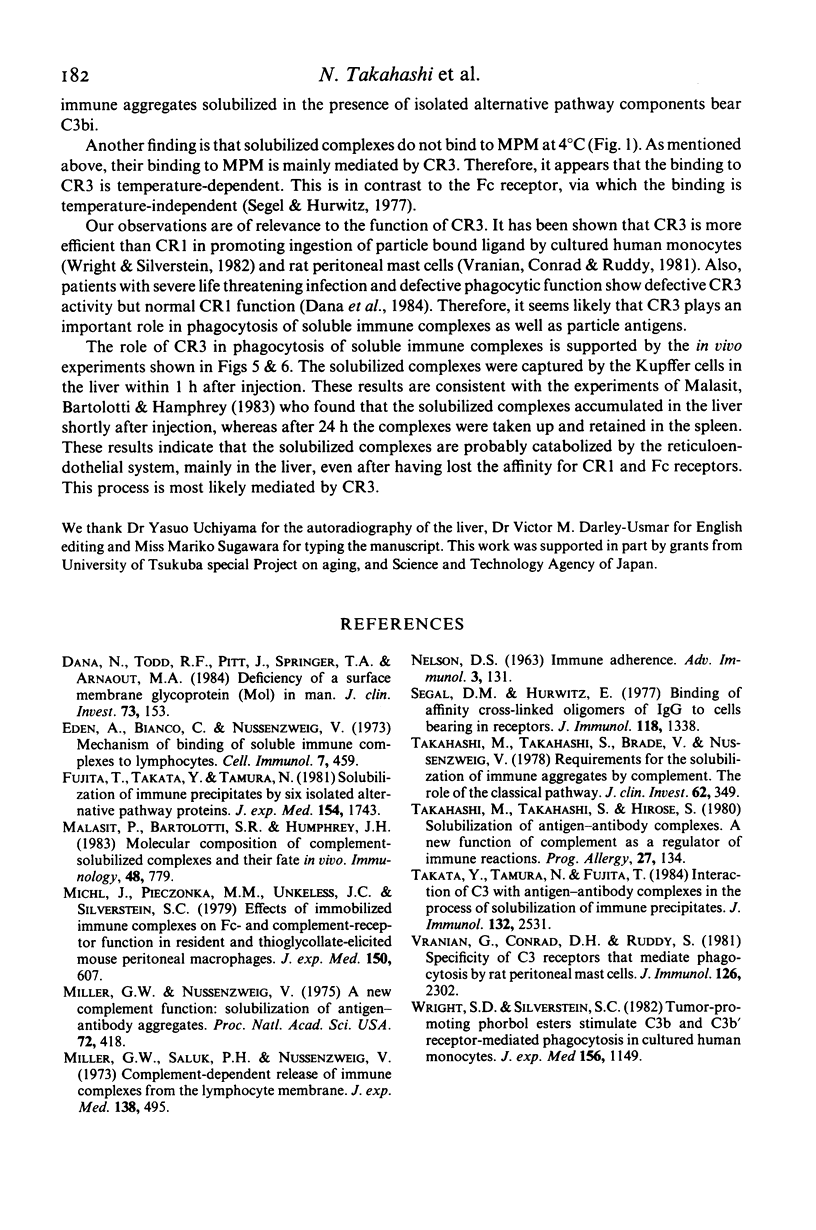
Images in this article
Selected References
These references are in PubMed. This may not be the complete list of references from this article.
- Dana N., Todd R. F., 3rd, Pitt J., Springer T. A., Arnaout M. A. Deficiency of a surface membrane glycoprotein (Mo1) in man. J Clin Invest. 1984 Jan;73(1):153–159. doi: 10.1172/JCI111186. [DOI] [PMC free article] [PubMed] [Google Scholar]
- Eden A., Bianco C., Nussenzweig Mechanism of binding of soluble immune complexes to lymphocytes. Cell Immunol. 1973 Jun;7(3):459–473. doi: 10.1016/0008-8749(73)90210-4. [DOI] [PubMed] [Google Scholar]
- Malasit P., Bartolotti S. R., Humphrey J. H. Molecular composition of complement-solubilized complexes and their fate in vivo. Immunology. 1983 Apr;48(4):779–789. [PMC free article] [PubMed] [Google Scholar]
- Michl J., Pieczonka M. M., Unkeless J. C., Silverstein S. C. Effects of immobilized immune complexes on Fc- and complement-receptor function in resident and thioglycollate-elicited mouse peritoneal macrophages. J Exp Med. 1979 Sep 19;150(3):607–621. doi: 10.1084/jem.150.3.607. [DOI] [PMC free article] [PubMed] [Google Scholar]
- Miller G. W., Nussenzweig V. A new complement function: solubilization of antigen-antibody aggregates. Proc Natl Acad Sci U S A. 1975 Feb;72(2):418–422. doi: 10.1073/pnas.72.2.418. [DOI] [PMC free article] [PubMed] [Google Scholar]
- Miller G. W., Saluk P. H., Nussenzweig V. Complement-dependent release of immune complexes from the lymphocyte membrane. J Exp Med. 1973 Sep 1;138(3):495–507. doi: 10.1084/jem.138.3.495. [DOI] [PMC free article] [PubMed] [Google Scholar]
- Segal D. M., Hurwitz E. Binding of affinity cross-linked oligomers of IgG to cells bearing Fc receptors. J Immunol. 1977 Apr;118(4):1338–1337. [PubMed] [Google Scholar]
- Takahashi M., Takahashi S., Brade V., Nussenzweig V. Requirements for the solubilization of immune aggregates by complement. The role of the classical pathway. J Clin Invest. 1978 Aug;62(2):349–358. doi: 10.1172/JCI109135. [DOI] [PMC free article] [PubMed] [Google Scholar]
- Takahashi M., Takahashi S., Hirose S. Solubilization of antigen-antibody complexes: a new function of complement as a regulator of immune reactions. Prog Allergy. 1980;27:134–166. [PubMed] [Google Scholar]
- Takata Y., Tamura N., Fujita T. Interaction of C3 with antigen-antibody complexes in the process of solubilization of immune precipitates. J Immunol. 1984 May;132(5):2531–2537. [PubMed] [Google Scholar]
- Vranian G., Jr, Conrad D. H., Ruddy S. Specificity of C3 receptors that mediate phagocytosis by rat peritoneal mast cells. J Immunol. 1981 Jun;126(6):2302–2306. [PubMed] [Google Scholar]
- Wright S. D., Silverstein S. C. Tumor-promoting phorbol esters stimulate C3b and C3b' receptor-mediated phagocytosis in cultured human monocytes. J Exp Med. 1982 Oct 1;156(4):1149–1164. doi: 10.1084/jem.156.4.1149. [DOI] [PMC free article] [PubMed] [Google Scholar]



